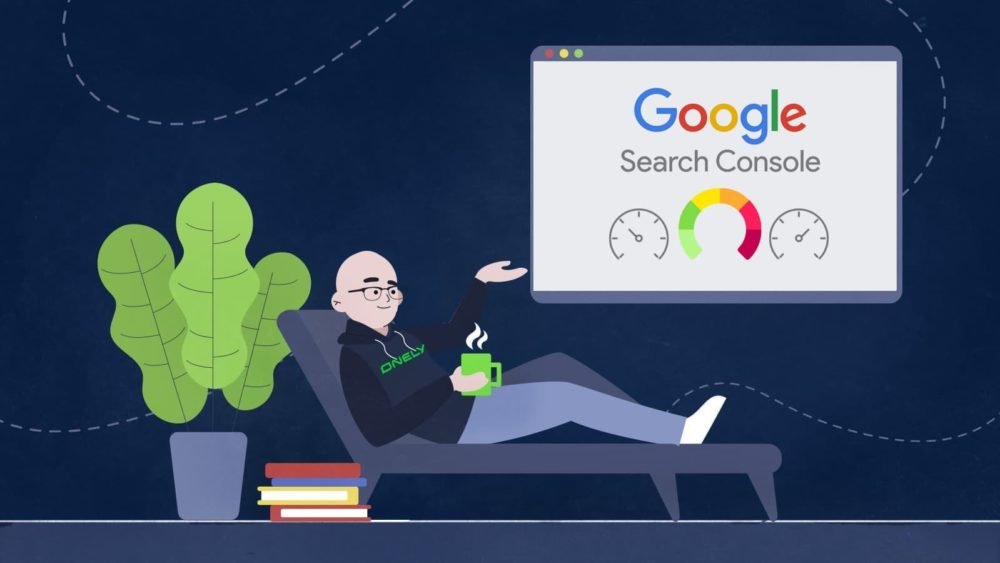To optimize First Contentful Paint (FCP), reduce server response times and minimize critical rendering path resources. Compress images and files, utilize a CDN, and implement code splitting for faster load times.
Improving FCP is crucial for enhancing user experience and strengthening SEO performance. Recognizing that FCP signals the time it takes for a viewer to see the first piece of content on a site, it acts as a first impression metric, impactful on bounce rates and user retention.
Speedy content delivery resonates with a positive user experience, thus contributing to higher engagement and conversion rates. By focusing on the essential rendering-trail and streamlining server communication, webmasters can effectively decrease load times. Modern strategies, such as leveraging browser caching, employing lazy-loading techniques, and optimizing CSS/JS deliverability, are vital. A swift FCP not only rewards with user approval but also aligns with search engine ranking factors, making it an indispensable aspect of website optimization.

Credit: eastsideco.com
Understanding Fcp And Its Importance
First Contentful Paint (FCP) is a critical performance metric that measures the time from when a page starts loading to when any part of the page’s content is rendered on the screen. It is a key indicator of how quickly users can see visible elements of a page.
The importance of FCP lies in its direct correlation with user experience. A faster FCP is often associated with a more positive user experience, as it reduces the time a user waits to see the actual content. This initial impression is crucial for user engagement and can influence their perception of a website’s performance.
Optimizing FCP is essential because it can lead to improved user satisfaction, lower bounce rates, and better search engine rankings. Websites with quick load times are more likely to retain users, resulting in more conversions and success in achieving business objectives.
Identifying Factors Affecting Fcp
Assessing website speed and performance is critical for optimizing First Contentful Paint (FCP). To effectively evaluate render-blocking resources, comprehensive testing using tools such as Google’s PageSpeed Insights can highlight scripts and stylesheets that hinder speedy content loading. It’s imperative to defer non-essential JavaScript and CSS to reduce initial loading times.
The impact of server response times on FCP cannot be overstated. Fast server responses are essential for a swift FCP, and several factors contribute to server speed. Employing a reliable Content Delivery Network (CDN), optimizing databases, and reducing server-side processing will improve overall response times. Proper utilization of caching mechanisms also plays a pivotal role in enhancing server efficiency.
| Action | Benefit |
|---|---|
| Minimize CSS & JS | Reduces load time |
| Use async/defer | Improves render times |
| Optimize server | Enhances response speed |
| Employ CDN | Decreases latency |
| Enable caching | Accelerates content delivery |
Leveraging Optimized Images For Fcp
Optimizing First Contentful Paint (FCP) significantly improves user experience by reducing the time it takes for a page’s content to start displaying. One key method to achieve this is through utilizing proper image formats. Formats like JPEG 2000, JPEG XR, and WebP provide superior compression and quality characteristics compared to traditional formats like JPEG or PNG. This ensures that images are not only visually appealing but also lightweight, contributing to a quicker FCP.
Moreover, implementing responsive image sizing is crucial. With an array of devices having various screen sizes and resolutions, it is imperative to serve appropriately sized images to prevent unnecessary data overhead. Utilizing HTML’s ‘srcset’ attribute, developers can provide multiple image sources that the browser can select from based on the viewing context, promoting a faster page load.
Lastly, employing lazy loading techniques further enhances FCP by loading images only as they enter the viewport. This means that users will face less delay when initially loading a page, as offscreen images are not fetched immediately. The intersection Observer API in JavaScript facilitates this by detecting when an image should be loaded, aligning the demand for resources with user behavior.
Prioritizing Critical Css Delivery
Understanding the importance of Critical CSS is crucial for improving First Contentful Paint (FCP) because it involves identifying and prioritizing the delivery of the minimal set of CSS required to render above-the-fold content. By focusing on the styling of visible content first, you can significantly accelerate page rendering times for users, thereby enhancing user experience and potentially contributing to better SEO rankings.
Techniques to efficiently integrate Critical CSS include using tools to extract and inline it within the tag, and asynchronously loading the remainder of the CSS. This ensures that users see styled content as quickly as possible. Additionally, employing methods such as server-side rendering or using a service worker can allow for the caching of critical styles and improve FCP performance for repeat visits.
Enhancing Server Response Times
Enhancing server response times is pivotal for optimizing the First Contentful Paint (FCP). It is essential to evaluate hosting options due to their direct impact on speed. Performance-oriented hosting solutions can significantly reduce server response times, ensuring content is served faster to users. Factors to consider include server location, resource allocation, and scalability. Particular emphasis should be laid on choosing a host that offers SSD storage, ample bandwidth, and a solid uptime record. These elements are the foundations for optimal website performance.
Caching strategies further enhance load times by storing frequently accessed content. Implementation of browser caching, server-side caching, and content delivery networks (CDNs) is vital. This ensures that static resources are stored closer to the user, thereby minimizing data transfer times and enhancing the user experience. Employing advanced caching mechanisms like service workers for offline use can further improve FCP. Regularly monitoring and tweaking caching configurations can lead to sustained speed enhancements.
Implementing Fcp Optimization Strategies
Efficient Content Delivery Networks (CDN) are vital in reducing the time required for data to travel from servers to users. By leveraging a robust CDN, you ensure that static resources are served from locations closer to your website visitors, leading to a faster First Contentful Paint. High-quality CDNs also offer the added benefit of load balancing and network optimization.
Implementing browser caching stores frequently accessed resources on a visitor’s local storage, which significantly reduces load times for repeat visits. It’s essential to configure your server to serve resources with appropriate cache headers, guiding browsers on how long to store the cached information.
Minification and compression techniques help in decreasing the size of CSS, JavaScript, and HTML files. This process eliminates unnecessary characters and spaces, enabling browsers to download and process content faster. Compression methods such as Gzip or Brotli effectively shrink the file size, contributing to a reduction in FCP times.
Continuous monitoring and testing with tools such as Google’s PageSpeed Insights, WebPageTest, or Lighthouse provide insights into the FCP performance. It’s critical to regularly assess your site and implement optimizations as needed to maintain optimal load times.
Case Studies On Successful Fcp Optimization
Real-life success stories in optimizing First Contentful Paint (FCP) showcase the transformative power of effectively executing performance tweaks. Multiple case studies reveal that embracing compression techniques, such as minifying CSS and JavaScript files, could dramatically enhance FCP times. The impact of a strong Content Delivery Network (CDN) usage cannot be overstated, with examples showing how geographical content replication improves loading speed.
Caching strategies play a critical role, as seen in studies where leveraging browser and server caching led to marked improvements in content delivery. Images often delay FCP; thus, several cases demonstrate the efficacy of image optimization solutions—like lazy loading, format conversion, and dimension scaling—to expedite rendering. These instances illuminate the prowess of a methodical approach to FCP optimization, with site architecture adjustments and critical path resource prioritization also yielding significant gains.
Emulating these best practices provides a roadmap to others looking to optimize their own sites. Key takeaways emphasize the necessity for a holistic view of website performance, considering both server-side and client-side factors to formulate a comprehensive optimization strategy. The outcomes of these case studies present compelling evidence that with the right techniques, achieving an optimal FCP is within reach.
Future Trends In Fcp Optimization
Emerging technologies are set to revolutionize the way we approach first contentful paint (FCP) optimization. With the advent of new compression algorithms and advanced caching techniques, web developers can expect to see a significant reduction in load times. Machine learning and artificial intelligence are predicted to play a pivotal role in automating the selection of critical resources, enhancing the delivery speed of content to users.
Predictions for FCP optimization methods highlight the further integration of performance metrics into development frameworks, offering real-time analysis and adjustments. The introduction of 5G technology will also contribute to faster content delivery, shifting the focus towards optimizing for ultra-low latency in addition to FCP.
The implications for SEO and user engagement cannot be overstated. Search engines are increasingly factoring site speed and user experience into their ranking algorithms. Websites that prioritize FCP optimization will not only reap the benefits of higher visibility but will also enjoy enhanced user retention and conversion rates. The future in this realm is promising, as both the technology and methodology evolve to meet the expectations of a fast-paced digital audience.
Frequently Asked Questions Of How To Optimize First Contentful Paint (fcp)
What Is First Contentful Paint (fcp)?
First Contentful Paint (FCP) is a user-centric metric. It measures the time from when the page starts loading to when any part of the page’s content is rendered on the screen.
Why Is Optimizing Fcp Important For Seo?
Optimizing FCP is important for SEO as it improves user experience. Faster FCP times can lead to increased engagement, reduced bounce rates, and potentially higher search rankings.
How Can I Improve My Website’s Fcp?
To improve FCP, minimize CSS and JavaScript. Use efficient code, prioritize above-the-fold content, and leverage browser caching. Optimize images and deliver content through a Content Delivery Network (CDN).
Does Server Response Time Affect Fcp?
Yes, server response time significantly affects FCP. Faster server responses reduce the load time, thus improving the FCP. Optimize your server or consider better hosting to improve response times.
Conclusion
Boosting your FCP is crucial for an enhanced user experience. Prioritize image optimization, minify CSS/JS, and upgrade hosting if needed. Embrace these strategies, and observe your website’s performance soar. Remember, users cherish speed, and search engines reward it—optimize diligently for noticeable improvements.




Leave a Reply